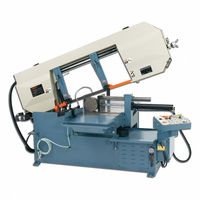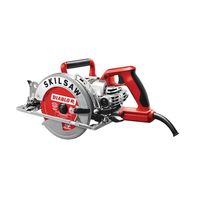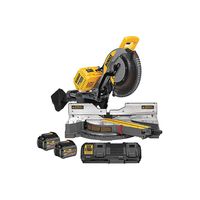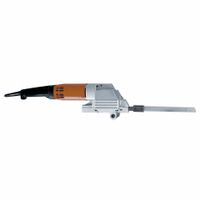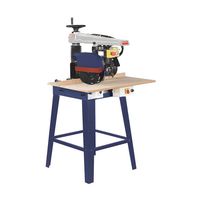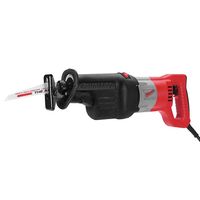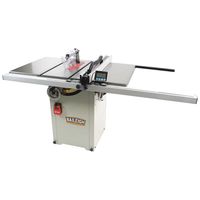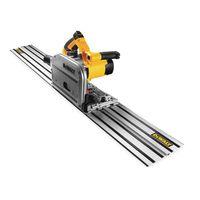Call +(254) 703 030 000 / 751 483 999 / 721 704 777
- Home
- Tools
- Power Tools
- Power Saws Blades
.....Read More
Frequently Asked Questions
What types of power saws are best for cutting wood, brick, stone, and metal?
For cutting wood, a **circular saw** is highly effective for straight cuts, while a **jigsaw** is ideal for curves and intricate designs. A **miter saw** is perfect for angled cuts, and a **table saw** is excellent for ripping large sheets of wood.
For cutting brick, a **masonry saw** or a **wet saw** with a diamond blade is best. These saws are designed to handle the abrasive nature of brick and provide precise cuts. A **reciprocating saw** with a masonry blade can also be used for rough cuts.
For stone, a **wet tile saw** or a **stone saw** with a diamond blade is recommended. These saws use water to cool the blade and reduce dust, ensuring clean and accurate cuts. An **angle grinder** with a diamond blade can also be used for smaller or more detailed work.
For cutting metal, a **metal chop saw** or a **cold saw** is ideal for straight cuts. These saws use abrasive or toothed blades to cut through metal efficiently. A **band saw** with a metal-cutting blade is suitable for more intricate cuts. An **angle grinder** with a cut-off wheel can also be used for quick, rough cuts in metal.
Each type of saw is specifically designed to handle the unique properties of the material it is intended to cut, ensuring efficiency and precision.
How do I choose the right saw blade for different materials?
To choose the right saw blade for different materials, consider the following factors:
1. **Material Type**:
- **Wood**: Use a blade with fewer teeth (e.g., 24-40) for ripping and more teeth (e.g., 60-80) for crosscutting. Carbide-tipped blades are ideal for durability.
- **Metal**: Use a blade with a high tooth count (e.g., 60-80) and a fine tooth pitch. Bi-metal or carbide-tipped blades are suitable for cutting metals.
- **Plastic**: Use a blade with a medium tooth count (e.g., 60) and a triple-chip grind to prevent melting.
- **Masonry**: Use a diamond blade for cutting through concrete, brick, or stone.
2. **Blade Diameter**: Ensure the blade diameter matches your saw’s specifications. Common diameters are 7-1/4 inches for circular saws and 10-12 inches for table saws.
3. **Tooth Configuration**:
- **Flat Top Grind (FTG)**: Best for ripping wood.
- **Alternate Top Bevel (ATB)**: Good for crosscutting wood and plywood.
- **Triple Chip Grind (TCG)**: Ideal for cutting hard materials like metal and plastic.
4. **Kerf Width**: A thin kerf blade requires less power and is suitable for portable saws, while a full kerf blade is more durable and used in stationary saws.
5. **Hook Angle**: A positive hook angle is aggressive and suitable for ripping, while a negative or zero hook angle is better for crosscutting and cutting metals.
6. **RPM Compatibility**: Ensure the blade’s maximum RPM rating matches or exceeds your saw’s speed to prevent damage.
By considering these factors, you can select the appropriate saw blade for efficient and safe cutting of various materials.
What safety precautions should I take when using a power saw?
When using a power saw, prioritize safety by following these precautions:
1. **Personal Protective Equipment (PPE):** Wear safety goggles to protect your eyes from flying debris, ear protection to guard against noise, and a dust mask to prevent inhalation of sawdust. Use gloves for hand protection and non-slip footwear for stability.
2. **Inspect the Saw:** Before use, check the power saw for any damage or defects. Ensure the blade is sharp, properly installed, and securely fastened. Verify that all safety guards are in place and functioning.
3. **Work Area:** Keep the work area clean and free of clutter. Ensure adequate lighting and a stable, non-slip surface for cutting. Remove any tripping hazards and ensure the power cord is out of the cutting path.
4. **Secure the Material:** Use clamps or a vise to secure the material being cut. This prevents movement and ensures precision, reducing the risk of kickback or binding.
5. **Proper Handling:** Maintain a firm grip on the saw with both hands. Stand to the side of the cutting path, not directly behind the saw. Keep your body balanced and avoid overreaching.
6. **Power Source:** Ensure the saw is unplugged or the battery is removed when changing blades or making adjustments. Use a grounded outlet and avoid using the saw in wet conditions to prevent electric shock.
7. **Operation:** Allow the saw to reach full speed before making contact with the material. Do not force the saw; let the blade do the work. Be aware of the blade's path and keep hands away from it.
8. **After Use:** Turn off the saw and wait for the blade to stop completely before setting it down. Unplug the saw when not in use and store it safely.
By adhering to these precautions, you can significantly reduce the risk of accidents and injuries while using a power saw.
How often should saw blades be replaced?
The frequency of replacing saw blades depends on several factors, including the type of saw, the material being cut, the quality of the blade, and the intensity of use. Generally, here are some guidelines:
1. **Type of Saw and Blade**: Different saws (circular, miter, table, band) and blade types (carbide-tipped, steel, diamond) have varying lifespans. Carbide-tipped blades, for instance, last longer than steel blades.
2. **Material Being Cut**: Cutting harder materials like metal or dense hardwoods wears blades faster than cutting softer materials like pine or plywood. Specialized blades for specific materials can extend lifespan.
3. **Quality of Blade**: Higher-quality blades, often more expensive, tend to last longer and perform better over time. Investing in a reputable brand can reduce the frequency of replacements.
4. **Frequency and Intensity of Use**: Blades used in high-volume, professional settings will need replacement more often than those used occasionally by hobbyists. Regular, heavy-duty use accelerates wear.
5. **Signs of Wear**: Replace blades when you notice signs like increased resistance, burning marks on wood, chipping, or rough cuts. Dull blades can overheat, damage materials, and strain the saw motor.
6. **Maintenance**: Regular cleaning and proper storage can extend blade life. Removing pitch and resin build-up prevents dulling and corrosion.
7. **General Rule of Thumb**: For hobbyists, replacing a blade every 1-2 years might suffice, while professionals might need to replace blades every few months or even weeks, depending on usage.
Ultimately, monitoring performance and maintaining blades can help determine the optimal replacement schedule, ensuring safety and efficiency in cutting tasks.
What are the signs that a saw blade needs to be replaced?
1. **Dull or Burnt Teeth**: If the teeth of the saw blade appear dull or have a burnt appearance, it indicates wear and tear, reducing cutting efficiency.
2. **Chipping or Rough Cuts**: When the saw blade starts producing rough, chipped, or splintered edges on the material, it suggests the blade is no longer sharp enough for clean cuts.
3. **Increased Cutting Resistance**: If you notice increased resistance or the need to apply more force while cutting, it may be due to a dull blade.
4. **Burn Marks on Material**: Burn marks on the material being cut can indicate that the blade is overheating, often due to dullness or improper alignment.
5. **Excessive Vibration or Noise**: Unusual vibrations or loud noises during operation can signal that the blade is damaged or worn out.
6. **Missing or Damaged Teeth**: Inspect the blade for any missing or damaged teeth, which can compromise cutting performance and safety.
7. **Blade Warping**: A warped blade will not cut straight and can cause binding or kickback, indicating the need for replacement.
8. **Material Buildup**: Excessive buildup of material, such as resin or pitch, on the blade can affect its performance and may suggest it's time for a new blade if cleaning doesn't help.
9. **Reduced Cutting Speed**: A noticeable decrease in cutting speed, despite using the same power and technique, can indicate a dull blade.
10. **Frequent Stalling**: If the saw frequently stalls during use, it may be due to a dull or damaged blade that needs replacing.
11. **Visible Cracks or Damage**: Any visible cracks or structural damage to the blade necessitate immediate replacement for safety reasons.
How do I maintain and clean saw blades for optimal performance?
To maintain and clean saw blades for optimal performance, follow these steps:
1. **Regular Inspection**: Frequently check the blade for signs of wear, damage, or buildup. Look for dull teeth, chips, or warping.
2. **Cleaning**:
- **Remove Resin and Pitch**: Use a commercial blade cleaner or a homemade solution of water and a few drops of dish soap. Soak the blade for 10-15 minutes.
- **Scrubbing**: Use a soft brush or a toothbrush to gently scrub away any residue. Avoid using metal brushes that can damage the blade.
- **Rinse and Dry**: Thoroughly rinse the blade with water and dry it immediately with a clean cloth to prevent rust.
3. **Sharpening**:
- **Manual Sharpening**: Use a diamond file or a sharpening stone to manually sharpen each tooth. Follow the original angle of the teeth.
- **Professional Sharpening**: For precision, consider taking the blade to a professional sharpening service.
4. **Lubrication**: Apply a light coat of machine oil or a specialized blade lubricant to prevent rust and reduce friction during use.
5. **Storage**: Store blades in a dry, cool place. Use blade protectors or hang them on a pegboard to prevent contact with other tools.
6. **Usage Tips**:
- **Correct Blade for Material**: Always use the appropriate blade for the material being cut.
- **Proper Technique**: Avoid forcing the blade through material; let the saw do the work.
- **Regular Maintenance**: Clean and inspect the blade after each use to ensure longevity and performance.
By following these steps, you can maintain your saw blades in top condition, ensuring clean cuts and extending their lifespan.
Can the same saw blade be used for cutting different materials?
Yes, the same saw blade can be used for cutting different materials, but it depends on the type of blade and the materials in question. Universal or multi-purpose saw blades are designed to handle a variety of materials, including wood, metal, plastic, and composites. These blades typically have a combination of features such as carbide-tipped teeth, which provide durability and the ability to cut through different materials without frequent replacement.
However, while multi-purpose blades offer versatility, they may not provide the best performance for specific materials compared to specialized blades. For instance, a blade specifically designed for cutting metal will generally perform better and last longer when cutting metal than a universal blade. Similarly, a blade designed for wood will offer cleaner cuts and greater efficiency when used exclusively for wood.
When using a single blade for multiple materials, it's important to consider the blade's tooth count, tooth geometry, and material composition. A higher tooth count generally results in smoother cuts, which is beneficial for materials like plywood or laminate. Conversely, a lower tooth count is better for faster, rougher cuts in materials like lumber.
Additionally, the speed and feed rate should be adjusted according to the material being cut to prevent damage to the blade and ensure safety. Regular maintenance, such as cleaning and sharpening, is also crucial to prolong the blade's life and maintain cutting efficiency.
In summary, while a single saw blade can be used for different materials, selecting the right type of blade and adjusting cutting parameters are essential for optimal performance and longevity.
